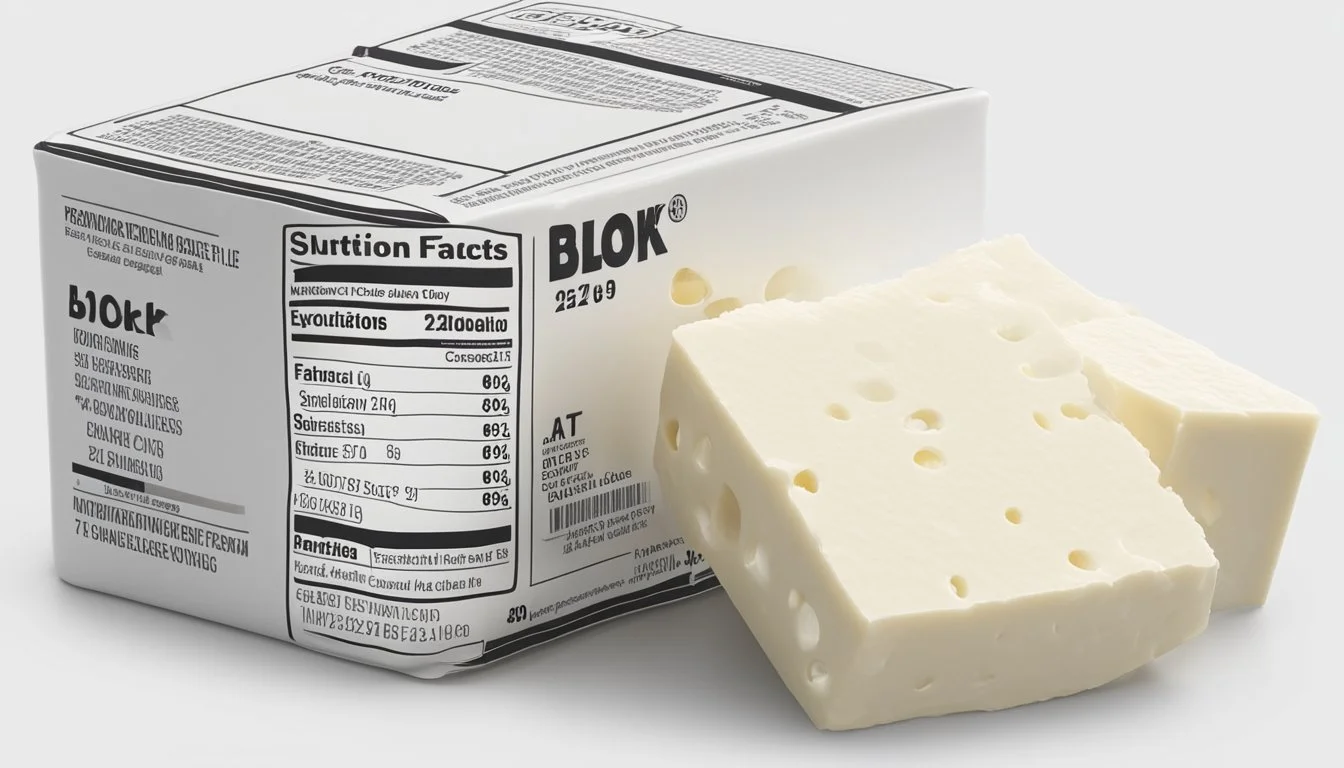How Long Does Feta Cheese Last?
Shelf Life and Storage Tips
Feta cheese (What wine goes well with cheese?), a staple of Mediterranean cuisine, is praised for its tangy flavor and crumbly texture. This popular cheese is often used in salads, pastries, and as a table cheese. Understanding its shelf life is important for both safety and quality. Feta cheese's longevity depends on its packaging and storage conditions. Typically, an unopened package of feta can last for up to six months when stored in the refrigerator.
Once the package of feta cheese is opened, it's essential to consume it within a certain timeframe to maintain its taste and texture. Opened feta usually remains good for about five to seven days if refrigerated properly. If the feta cheese is submerged in brine, its freshness can extend up to a month. The preservation of feta cheese in brine is not just a traditional practice but also an effective way to extend its shelf life.
For those looking to keep feta cheese beyond the usual refrigerated period, freezing is a viable option. Freezing can significantly extend the life of the cheese, though it may slightly alter the texture. It's always advisable to refer to the "best before" date as a preliminary guide, understanding that the actual shelf life may vary according to storage conditions. Proper storage practices are key in ensuring that feta cheese maintains its quality and remains safe to consume.
Understanding Feta Cheese
Feta cheese, a traditional Greek dairy product, possesses a rich cultural heritage and distinctive culinary attributes. Made primarily from sheep's milk, or a mixture of sheep and goat's milk, it is renowned for its tangy taste, crumbly texture, and characteristic white color.
Composition: Feta's nutritional profile includes:
Milk: Predominantly sheep's, with up to 30% goat's milk.
Fat: Varies, but reduced-fat options are available.
Protein & Calcium: High levels, contributing to its health benefits.
Texture and Taste:
Texture: Soft yet crumbly.
Taste: Ranges from mild to sharp, depending on age.
Preservation in Brine: Feta is preserved in a brine solution, which is a saturated mixture of water and salt. This brine acts as a flavor enhancer and helps maintain the cheese's moisture, firmness, and longevity. The salt in the brine also plays a crucial role in inhibiting bacterial growth, ensuring the cheese remains safe to consume over time.
Serving and Culinary Uses: When served, feta is often crumbled over salads, baked into savory pastries, or simply enjoyed on its own. Its versatility in the kitchen makes it a favorite ingredient among chefs and home cooks alike, adding a burst of flavor to a wide array of dishes.
In summary, feta cheese is a versatile dairy product cherished for its robust taste and texture. Proper storage in brine not only prolongs its shelf life but also enhances its distinct flavor profile, which is celebrated in numerous cuisines around the world.
Storage Fundamentals
Proper storage is crucial for preserving feta cheese's quality and safety. Each storage method impacts shelf life and freshness.
Unopened Feta Cheese
Unopened feta cheese remains fresh for up to 6 months when stored in the refrigerator at a consistent temperature. It should stay in its original sealed packaging — typically, brine or vacuum-sealed plastic wrap — to maintain moisture levels and prevent spoilage. The packaging not only retains the cheese's optimal texture but also keeps out harmful bacteria.
Shelf life: Up to 6 months (refrigerated)
Packaging: Original brine or vacuum-sealed
Temperature: Consistent refrigeration
Opened Feta Cheese
Once opened, feta cheese's shelf life decreases. To extend its longevity, store it in an airtight container submerged in brine — a saltwater solution helps preserve texture and flavor. In the refrigerator, opened feta cheese lasts for approximately 5-7 days if not stored in brine. With proper brine storage, it can last for around 1 month.
Shelf life without brine: 5-7 days (refrigerated)
Shelf life in brine: Approximately 1 month (refrigerated)
Storage containers: Airtight, with brine covering the cheese
Freezing Feta Cheese
It is possible to freeze feta cheese, although it may alter the texture. To freeze, wrap the cheese tightly in plastic wrap and place it in a Ziploc bag or airtight container. Frozen feta can last for several months but is best used within 1 month. Thaw it in the refrigerator before use.
Shelf life: Best within 1 month (frozen)
Packaging for freezing: Sealed in plastic wrap, then airtight container
Thawing: In the refrigerator
Refrigeration vs. Room Temperature
Keeping feta cheese refrigerated is essential. At room temperature, feta can quickly become a breeding ground for mold and bacteria, potentially leading to spoilage, foodborne illnesses, and a significant reduction in shelf life. Always store feta in the refrigerator to minimize the risk of food poisoning and protect its quality.
Refrigerator: Necessary for longevity and safety
Room Temperature: Increases risk of spoilage and foodborne illnesses
Determining Freshness and Spoilage
To ensure the safe consumption of feta cheese, one must be cognizant of various spoilage indicators that denote when the cheese is no longer suitable for consumption.
Visual and Textural Cues
Color changes: Fresh feta cheese exhibits a white to off-white color. The presence of green or black spots may indicate mold growth, which is a clear sign of spoilage. Texture: A fresh feta should have a crumbly yet slightly creamy texture. If it appears excessively slimy or develops a dry, hard exterior, this suggests that the cheese has gone bad.
Olfactory Signs
The smell of feta cheese is characteristically tangy. An onset of sour or foul odors often signifies spoilage. Any strong, off-putting smell vastly different from its usual briny scent could mean that the feta is no longer good to use.
Taste Assessment
Flavor profile: Healthy feta is known for its sharp, salty taste. However, a sour or bitter flavor beyond its typical profile can suggest spoilage. One must avoid tasting the feta if they suspect it has spoiled to prevent the risk of food poisoning.
Food Safety Considerations
Expiration dates serve as an initial guideline for determining cheese freshness. Feta exceeding this date or showing spoilage signs should be discarded to mitigate health risks. Food poisoning symptoms can ensue if one consumes spoiled cheese, thus prioritizing food safety over consumption is paramount.
Best Practices for Handling and Usage
When dealing with feta cheese, it's important to understand the right handling techniques, how to maximize its shelf life, and the best ways to incorporate it into various recipes.
Proper Handling Techniques
To maintain the quality of feta cheese, both cheese blocks and crumbled feta should be handled with care. Upon purchasing, the cheese should be transported in a cool environment and placed in the refrigerator as soon as possible. When using feta cheese, one should ensure that their hands, utensils, and cutting boards are clean to prevent contamination.
Use a clean fork or spoon to handle crumbled feta, avoiding direct contact with fingers.
After cutting, wrap the remaining cheese block tightly in plastic wrap or place it in an airtight container to prevent exposure to air.
Maximizing Shelf Life
Proper storage extends the lifespan of feta cheese significantly. Whether in block or crumbled form, feta cheese should be stored at a constant refrigerator temperature.
Leftover cheese blocks fare well in brine solution or olive oil with herbs, stored in an airtight container like Tupperware in the fridge.
Crumbled feta can be kept in its original packaging if unopened or in a similar container if already opened, sealing tightly to reduce air exposure.
In terms of longevity, feta cheese in brine can last from a few weeks to several months beyond its sell-by date under optimal storage conditions.
Incorporating Feta in Recipes
Feta cheese is versatile and can be used in a variety of recipes ranging from salads and pizzas to dips and spreads. The key to using feta is to remember that its distinct flavor can either take center stage or enhance another ingredient's taste when used as a garnish.
For baked dishes, adding feta on top of a pizza or into a baking sheet with vegetables allows it to soften and meld flavors without overpowering the dish.
In salads or as a garnish, crumbled feta introduces a salty and tangy profile, pairing well with fresh greens and vinaigrettes.
Frequently Asked Questions
This section addresses common queries regarding the preservation and signs of spoilage of feta cheese.
Can You Freeze Feta Cheese?
One can freeze feta cheese to extend its shelf life. For best results, the cheese should be placed in an airtight container or tightly wrapped in plastic wrap before being stored in the freezer. Frozen feta can last up to three months. However, one should note that freezing may alter the texture, making it crumblier upon thawing.
How Long Does Feta Last After Opening?
Once opened, feta cheese's longevity depends on its storage. If properly refrigerated and kept in an airtight container or submerged in brine, opened feta can last for up to 7 to 14 days. Without its protective brine, its freshness may reduce more quickly.
How to Store Feta Without Brine?
Storing feta without brine requires one to keep the cheese in a tightly sealed airtight container or plastic wrap to minimize exposure to air and moisture. Refrigerate promptly, and consume within 5 to 7 days to prevent spoilage.
Avoid the queues by purchasing your plastic wrap via the internet for a hassle-free buying journey!
Signs of Spoiled Feta
Identifying spoiled feta involves checking for a few key signs:
Mold: Visible spots or changes in color indicate mold growth.
Smell: An off or sour odor that differs from the tangy smell of fresh feta.
Texture: Any sliminess or excessively dry texture is a sign of spoilage.
Taste: A taste test should be the last resort, and one should discard the cheese if any previous spoilage signs are evident.
Health and Nutritional Information
Feta cheese is a popular dairy product with distinct characteristics, owing its nutrition profile to its primary ingredient, milk. The health benefits of feta are numerous due to its rich content of essential nutrients.
Nutrient Composition:
Typically, feta cheese comprises significant amounts of protein and calcium, the latter of which is crucial for bone health. The protein content in feta supports muscle maintenance and overall body function. This cheese is also a source of other minerals like phosphorus, which works alongside calcium to reinforce bone structure.
Fat Content:
The fat content in feta cheese is relatively lower compared to other cheeses, making it a choice for those managing their fat intake. However, the type of milk used (sheep or goat) can influence the fat profile. Feta made from sheep's milk generally has a higher fat content than that made from goat's milk.
Sodium Levels:
One should be mindful of the sodium levels in feta, as it is typically brined. This can contribute to a higher sodium content, which should be considered within the context of dietary restrictions, especially for individuals monitoring their salt intake due to health concerns like hypertension.
Dietary Restrictions:
For individuals with dairy intolerance or those following a vegan diet, consuming feta cheese may not be suitable due to the presence of milk.
The table below summarizes the key nutritional information of feta cheese:
Nutrient Benefit Protein Muscle maintenance, overall body function Calcium Bone strength Phosphorus Works with calcium to reinforce bones Fat Concentration varies with type of milk Sodium Can contribute to higher daily intake; monitor usage
It is always recommended to enjoy feta in moderation, in line with a balanced diet and lifestyle.
Historical and Cultural Context
Feta cheese has a storied past deeply rooted in Greek culture and cuisine. It is frequently cited as one of the oldest cheeses, with references to its production appearing in Greek mythology, particularly Homer's Odyssey, which mentions cheese-making by the Cyclops.
In Ancient Greece, feta cheese—or its ancestral form—was an essential part of daily life and held significant cultural significance. The art of cheese-making was more than just a means to preserve milk; it played into the societal fabric of feasts and dietary habits.
With cheese history dating back thousands of years, traditional methods of producing feta involve:
Curdling: Fresh sheep's milk or a mixture with goat's milk.
Aging: Stored and aged in brine, contributing to feta’s distinct salty taste and crumbly texture.
Greek cuisine today still honours these historic techniques, linking contemporary culinary practices to a rich heritage. Feta's identity as a Greek cheese has been protected by European law since 2002, indicating that only cheese produced in certain areas of Greece, following traditional methods, can be labelled as 'feta'.
While feta cheese is consumed globally, its significance in Greek cuisine is unparalleled. It graces tables in many forms, including salads, pies, and as a standalone dish, retaining its reputation as a cherished, historical staple of the Greek diet.
Alternative Cheese Options
When feta is not available or desired, there are several cheese and non-dairy alternatives that one can use to replicate the texture or flavor profiles in various dishes.
Substitute Cheeses for Feta
Ricotta: A softer cheese with a sweet flavor; can be used in a 1:1 ratio for feta.
Cotija: A Mexican cheese, crumbly like feta, with a salty taste, best used in a 1:1 substitution.
Halloumi: Ideal for grilling or frying, it offers a similar texture with a higher melting point.
Queso Fresco: Another crumbly option with a milder flavor, works as a topping or in salads.
For those looking for a more familiar flavor profile, the following can also be considered:
Cheddar (Mild versions): Though less tangy, cheddar can provide the necessary texture in baked dishes.
Mozzarella: With a mild taste and melty quality, it's better suited for pizzas or baked pasta.
Gouda: Smoked gouda can introduce a different but pleasant flavor in place of feta.
Non-Dairy Alternatives
For those avoiding dairy, finding a suitable feta substitute can be a bit challenging due to feta's unique taste and texture. However, the following dairy-free substitutes can be appropriate in different culinary contexts:
Tofu: Pressed and crumbled, seasoned to taste, tofu can mimic feta's texture in salads and cold dishes.
Vegan Cheese: Various vegan cheeses made from nuts or soy can approximate the feta experience.
These non-dairy options may not perfectly recreate the feta flavor but will provide a similar consistency and a complementary taste in many recipes.
Environmental Impact and Sustainability
When examining the production of feta cheese, sustainable farming practices are essential to mitigate the associated environmental considerations. The dairy industry, particularly in the creation of cheeses like feta, has notable environmental impacts due to several factors.
Methane Emissions: Dairy cows produce methane, a greenhouse gas that significantly contributes to global warming.
Resource Consumption: The production of the milk required for feta cheese demands substantial amounts of water and feed.
Transportation: The transportation of milk and finished cheese products adds to carbon emissions.
Sustainable farming practices employed in the dairy industry aim to reduce these impacts. Key practices include:
Manure Management: Effective management can reduce methane emissions from livestock.
Feed Efficiency: Optimizing feed can result in healthier cows and less methane production.
Renewable Energy: Farms using solar or wind power for operations decrease reliance on fossil fuels.
The industry also assesses the environmental implications of cheese production through lifecycle analyses, which take into account the various stages from milk production to cheese aging. Minimizing the environmental footprint involves careful attention to:
Energy Usage: Decreasing energy consumption in cheese-making processes.
Waste Reduction: Implementing measures to reduce waste generated from dairy farms and during the production process.
It's crucial for the dairy industry to balance production needs with environmental stewardship, ensuring the sustainability of both the product and the planet.
Conclusion
Feta cheese, a cherished staple in culinary practices, offers a unique tang and crumbly texture ideal for various dishes. The lifespan of feta cheese largely depends on its packaging and storage conditions.
Unopened and in brine: Feta typically maintains its quality for up to six months when refrigerated.
Unopened, no brine: The cheese may last slightly less than if it were in brine, but it remains safe for consumption for weeks past the best-before date.
Opened feta: Regardless of brine, it should be eaten within 7 to 14 days to enjoy its optimal taste and texture.
It is imperative for one to adhere to storage guidelines to ensure the cheese’s longevity. Post-opening, feta should reside in an airtight container or tightly wrapped in the fridge. Signs of spoilage include:
Off-odors
A sour taste
Mould development
A dry or slimy texture
Should one observe these signs, it is crucial to dispose of the cheese to avoid health risks. For those seeking to utilize feta to its fullest, consider adding it to salads, pastries, or as a garnish on finished dishes, appreciating its flavor before it surpasses its prime. Despite its perishability, feta’s versatility in dishes remains a testament to its enduring popularity.








